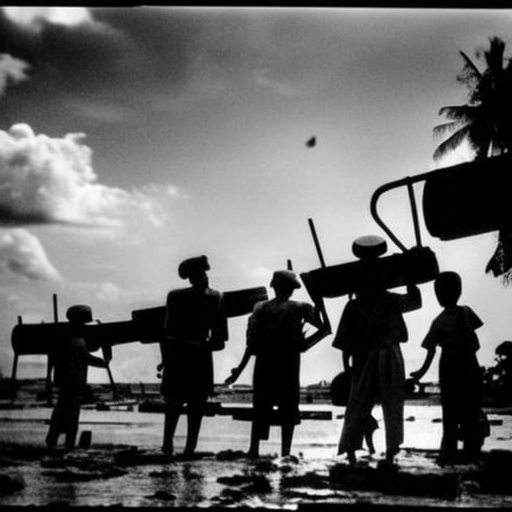Aceh War: A Struggle for Independence
The Aceh War, also known as the Dutch-Indonesian War or the Aceh Darussalam War, was a conflict that took place from 1873 to 1904 between the Sultanate of Aceh and the Dutch East Indies. It was a significant event in the history of Indonesia’s struggle for independence.
Background:
Aceh, located on the northern tip of the island of Sumatra, was a prosperous and independent sultanate with a long history of resistance against foreign powers. The Dutch, who had established a colonial presence in the East Indies, sought to control Aceh’s rich resources, including its valuable pepper plantations.
Causes of the War:
The primary cause of the Aceh War was the Dutch desire to expand their colonial influence and control over Aceh. The Dutch colonial administration, led by Governor-General James Loudon, aimed to establish a monopoly over the pepper trade and extend their control over the entire island of Sumatra.
The Sultanate of Aceh, under Sultan Mahmud Syah, resisted Dutch attempts to control their territory. The sultanate had a strong military tradition and was supported by a large number of local fighters known as “Acehnese warriors” or “Acehnese knights.”
Course of the War:
The Aceh War can be divided into three distinct phases. The first phase (1873-1874) saw the Dutch launching a series of military expeditions to subdue Aceh. However, these initial attempts were largely unsuccessful, as the Acehnese warriors employed guerrilla tactics and had a deep knowledge of the local terrain.
The second phase (1874-1880) witnessed a significant escalation of the conflict. The Dutch, under General Johan Harmen Rudolf Köhler, launched a full-scale invasion of Aceh. They captured the capital city of Kutaraja (now Banda Aceh) and declared victory. However, the Acehnese resistance continued, and the Dutch faced numerous setbacks and heavy casualties.
The third phase (1880-1904) marked a shift in Dutch strategy. They adopted a policy of “military containment” and focused on isolating the Acehnese forces from their sources of support. The Dutch built a series of forts and blockaded the coast to prevent supplies from reaching the Acehnese fighters. This strategy gradually weakened the Acehnese resistance, and the war entered a prolonged stalemate.
Impact and Legacy:
The Aceh War had a profound impact on both Aceh and the Dutch East Indies. The conflict resulted in widespread destruction and loss of life, with estimates of Acehnese casualties ranging from 50,000 to 100,000 people. The Dutch also suffered heavy losses, both in terms of soldiers and financial resources.
The war attracted international attention and criticism, particularly due to the Dutch use of brutal tactics, including forced labor, mass killings, and concentration camps. These atrocities sparked outrage and condemnation from human rights organizations and intellectuals around the world.
The Aceh War also played a significant role in shaping the national consciousness of Indonesia. The resistance put up by the Acehnese against the Dutch colonial forces became a symbol of Indonesian resistance against foreign domination. The war inspired other regions in Indonesia to fight for independence and contributed to the broader nationalist movement that eventually led to Indonesia’s independence in 1945.
In 2005, the Indonesian government and the Free Aceh Movement (GAM) signed a peace agreement, ending decades of conflict in the region. The agreement granted Aceh a special autonomous status and allowed the Acehnese people to govern their own affairs.
In conclusion, the Aceh War was a protracted conflict between the Sultanate of Aceh and the Dutch East Indies. It was driven by the Dutch desire to control Aceh’s resources and expand their colonial influence. The war had a significant impact on both Aceh and the broader Indonesian struggle for independence, leaving a lasting legacy in the country’s history.












